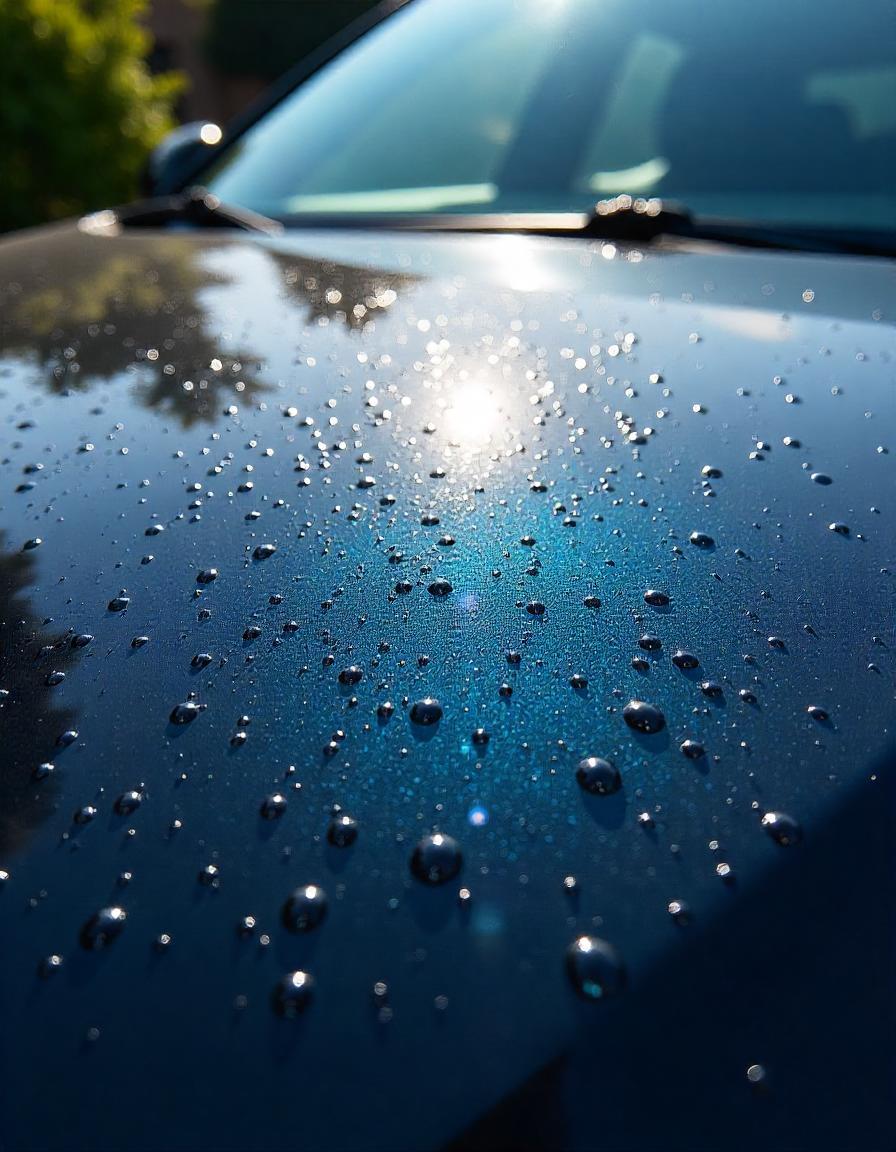Understanding Ceramic Coating and Its Role in Protecting Your Car’s Paint

What is Ceramic Coating?
Definition and Composition
Ceramic coating is a liquid polymer, primarily composed of silicon dioxide (SiO₂) and sometimes titanium dioxide (TiO₂), that chemically bonds with a car’s clear coat to form a protective layer. Unlike traditional wax or sealants, ceramic coatings create a semi-permanent or permanent bond, ensuring long-lasting protection.
How It Bonds with the Car’s Paint
When applied, the coating cures and creates a hydrophobic (water-repellent) and chemically resistant surface. This means it helps repel dirt, water, and contaminants while making the paint easier to clean.
Scratch Resistance vs. Scratch Proof
Difference Between Scratch Resistance and Scratch Proof
One of the most common misconceptions about ceramic coatings is that they make a car scratch-proof. In reality, ceramic coatings provide scratch resistance, meaning they can reduce the likelihood of minor scratches and swirl marks, but they do not make the paint invulnerable to deeper scratches caused by sharp objects or impact.
How Ceramic Coatings Provide Scratch Resistance
Ceramic coatings create a hard, smooth, and slick surface that helps reduce friction when abrasive materials come into contact with the car. This reduces the severity of fine scratches caused by improper washing techniques or light abrasions. However, the coating itself is not thick enough to absorb deep impacts from road debris or accidents.
Hardness Rating (9H) and Misconceptions
Explanation of the 9H Pencil Hardness Rating
Many ceramic coatings are marketed as "9H hardness," which refers to the highest rating on the pencil hardness scale (not the Mohs scale). This means the coating can withstand scratches from a 9H pencil (the hardest type of graphite pencil).
Misconceptions About the Mohs Scale and Hardness
Some people mistakenly believe that 9H ceramic coatings are as hard as diamonds (Mohs scale 10). However, the pencil hardness test is different from the Mohs scale, and a 9H coating does not make a car impervious to deep scratches from sharp metal, gravel, or keys.
Protection Against Minor Scratches
How Ceramic Coatings Absorb Minor Scratches and Swirl Marks
The slick surface of ceramic coatings helps minimize friction, which can reduce the formation of swirl marks from washing and dust accumulation. The hydrophobic properties also keep contaminants from sticking, further reducing the risk of surface scratches.
Limitations in Preventing Severe Scratches
While ceramic coatings offer protection against light abrasions, they cannot prevent deep scratches or chips from road debris, collisions, or improper washing techniques using harsh brushes or dirty towels.
Self-Healing Properties of Some Ceramic Coatings
How Certain Ceramic Coatings Have Self-Healing Properties
Some high-end ceramic coatings feature self-healing technology, allowing minor scratches to disappear when exposed to heat (sunlight or warm water). These coatings contain elastic polymers that regain their shape after minor abrasions.
Limitations in Removing Deep Scratches
Self-healing coatings can only repair superficial micro-scratches. If the damage is deep enough to reach the clear coat or paint, professional polishing or repainting is necessary.
Maintenance and Care for Maximum Scratch Resistance
Proper Maintenance to Maximize Scratch Resistance
To get the best performance from a ceramic coating:
- Use a pH-neutral car shampoo to avoid breaking down the coating.
- Follow the two-bucket wash method to minimize swirl marks.
- Use microfiber towels to prevent scratching during drying.
Avoiding Harsh Cleaning Methods
- Do not use automatic car washes with abrasive brushes.
- Avoid aggressive rubbing or scrubbing on the coated surface.
- Use a ceramic-safe quick detailer for regular touch-ups.
Combining Ceramic Coating with Paint Protection Film (PPF)
Benefits of Pairing Ceramic Coating with PPF
For enhanced protection, many car owners apply ceramic coating over PPF. While PPF absorbs impacts from rock chips and debris, the ceramic coating adds hydrophobic and UV-resistant properties on top.
Additional Protection Against Stone Chips and Minor Impacts
- PPF acts as a physical barrier against rock chips.
- Ceramic coating enhances durability by repelling dirt, water, and stains.
- Together, they provide superior protection against both environmental and physical damage.
Environmental Protection Benefits
Protection Against UV Rays, Dirt, and Water
Ceramic coatings help protect a car’s paint by:
- Blocking UV rays, preventing fading and oxidation.
- Repelling dirt and contaminants, making cleaning easier.
- Offering water beading (hydrophobic effect), reducing water spots.
Enhancing the Car's Appearance and Durability
- Provides a deep, glossy finish, making the paint look more vibrant.
- Reduces the need for frequent waxing.
- Helps maintain the car’s resale value by keeping the paint in pristine condition.
Conclusion
Ceramic coatings are an excellent investment for those looking to protect and enhance their vehicle’s paint. While they provide scratch resistance, UV protection, and hydrophobic properties, they are not a substitute for Paint Protection Film when it comes to impact resistance. Proper maintenance, avoiding harsh cleaning methods, and combining ceramic coatings with PPF can maximize protection and longevity. By understanding its capabilities and limitations, you can make the most of ceramic coating and keep your car looking brand new for years to come. 🚗✨
- Art
- Causes
- Crafts
- Dance
- Drinks
- Film
- Fitness
- Food
- Jogos
- Gardening
- Health
- Início
- Literature
- Music
- Networking
- Outro
- Party
- Religion
- Shopping
- Sports
- Theater
- Wellness


